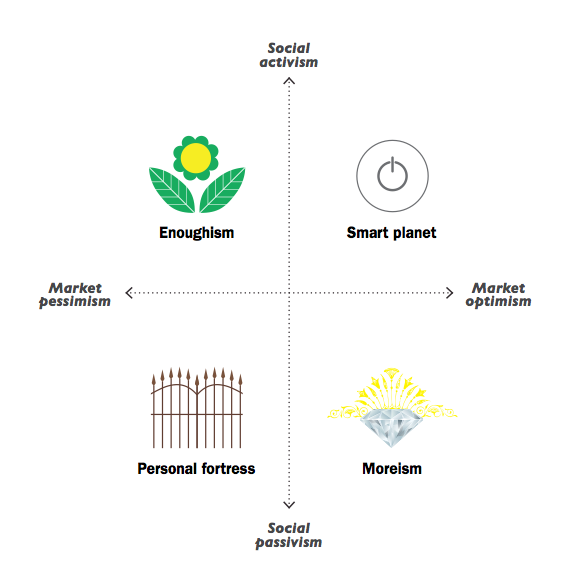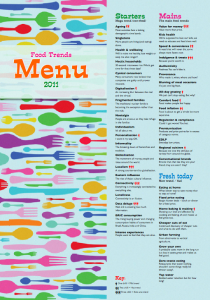Few quick snippets plus something longer to ponder…
I forgot to say how impressed I was with the Global and Mail whilst in Canada recently. This is a really good newspaper. Couple of interesting thoughts from Tuesday’s edition. Firstly, an article on internet reform by Jeffrey Hunker (author of Creeping failure: How We Broke the Internet and What We Can Do to Fix It). He points out that in the case of the cyber superworm Stuxnet and the WikiLeaks inspired ‘hacktivist’ attacks on US government and commercial sites the perpetrators are still unknown. In other words, events in cyberspace can have “serious consequences, yet are largely outside the framework of accountability.” He goes on to liken the internet to London during the time of Dickens. A rapidly growing and chaotic place filled with crime and ineffective government. Consequences? I’ve spoken about this before, but one implication is not that the internet will break technically, but that people may simply get fed up with using it.
Other quick snippets from the Globe and Mail. One, the global population will hit 7 billion in the second half of 2011. Two, scientists have found that people forced to turn off mobile phones, email and the internet suffer from psychological and physical symptoms similar to those experienced by drug addicts going ‘cold turkey’
OK, now the long one to ponder. I’ve just written this for the next issue of What’s Next (up next week). Read it and then ask yourself whether this has any implications for large firms fighting other large firms using innovation as a key weapon.
The world, in case you haven’t noticed, is suffering from two simultaneous shocks. The first is technological. The development of the internet is reshaping the world in a manner similar to the industrial revolution two centuries earlier. The second is global instability. The end of the Cold War is a prime cause of this, but globalisation, deregulation and resources are also playing their part. Nevertheless, the thinking within the US military is largely unchanged. For example, the US has spent around $1 trillion ($3 trillion according to one estimate) on the war in Iraq and is now “close to punching itself out” according to John Arquilla, a Professor of defence analysis at the US Naval Postgraduate School.
The fundamental issue is scale. The dominant doctrine within the Pentagon is still “shock and awe” and, to achieve overwhelming force, the US spends billions on big ships, big guns and big battalions. This might work if you are fighting a conventional war, but it is becoming increasingly apparent that it doesn’t work very well against networked adversaries. In the UK there has been both shock and awe that UK defence budget is being cut. The thinking is that one can only perform worse with less. Similarly, in the US, there are calls for more and more soldiers to fight in Afghanistan and Iraq.
But perhaps bigger isn’t always better. Small units of soldiers can be highly effective, especially when they are connected to other small units or small numbers of aircraft. This is rule one of John Arquila’s new rules for war – that many and small beats few and large. After all, what exactly is the point of giant aircraft carriers in an age of supersonic anti-ship missiles? Hundreds of small craft equipped with smart weapons are likely to be more effective.
Similarly, being in love with expensive and sophisticated weapons is all very well but many smart systems are almost unworkable in many of the situations that Western armies now find themselves. Rule two is that finding matters more than flanking. Flanking has worked historically, but the game has now moved on. Think, for example, of the 400,000 Iraqi troops that just “melted away” when confronted by US forces in 2003 only to reappear as hit and run insurgents in the months and years afterwards.
The idea here is that rather than being organised as a “shooting organization” the military needs to be redesigned around a “hider-finder dynamic” and act as a “sensing organization” too. After all, before you fight an enemy you have to find them and this is becoming increasing difficult when enemies use networking technologies to rapidly communicate and organise themselves.
Rule 3 is that swarming is the new surging. Swarming is the type of attack used by terrorists coming at a target from several different directions at once or attacking several targets simultaneously. The November 2008 Mumbai attack conducted by just two five-man teams is an example, as is the Hezbollah conflict with Israel during the summer of 2006.
Despite this, US Grand Strategy is still configured to deal with a single large threat rather than multiple, smaller or simultaneous threats. In a networked age, even very small teams armed with the most basic weapons can cause huge amounts of damage, but most military planners seem to be unaware of this or, if they are aware of it, are failing to act on this knowledge. There is a saying that generals are always fighting the last war. Seems some of them are still planning it too.
BTW, a final thought. I note that a Russian investment firm has taken a stake, along with Goldman Sachs, in Facebook. So the Russians now have in interest in a company that has intimate details on 550 million people including a large chunk of Americans. Hey, who needs thousands of spies when millions of people just tell you everything without you asking! Given the recent uproar about foreign firms buying strategically important US (physical) assets I’m rather surprised that this wasn’t stopped.


